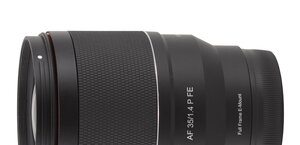Nikon Nikkor Z MC 50 mm f/2.8
5. Chromatic and spherical aberration
Chromatic aberration
The Nikkor MC 2.8/50 didn't provide any reasons to expect a slip-up when it comes to correction of longitudinal chromatic aberration. After all it doesn't feature an extremely fast aperture and its constructors made sure there is one low dispersion ED glass element in the system. Accordingly, in this category the lens's performance is simply flawless. |
Lateral chromatic aberration might be described in similar terms and below you can find its detailed graph.

Please Support UsIf you enjoy our reviews and articles, and you want us to continue our work please, support our website by donating through PayPal. The funds are going to be used for paying our editorial team, renting servers, and equipping our testing studio; only that way we will be able to continue providing you interesting content for free. |
- - - - - - - - - - - - - - - - - - - - - - - - - - - - - - - - - - - - - - - - - - - - - - - -
It's an interesting graph, with a noticeable minimum by f/5.6; still, even at extreme apertures, where the results are the highest, the lens never exceeds a very low level of 0.03%. In this category it fares perfectly well.
| Nikon Z7, RAW, f/2.8 | Nikon Z7, RAW, f/5.6 |

|

|
Spherical aberration
First photos of this chapter don't feature any focus shift effect; it means spherical aberration levels cannot be very high. Still, that aberration is not corrected in a perfect way as its slight influence can be noticed in out-of-focus circles of light we got before and behind the focus – there are differences in light spread inside and, especially, the intensity of their rims.
| Nikon Z7, f/2.8, before | Nikon Z7, f/2.8, after |

|

|






